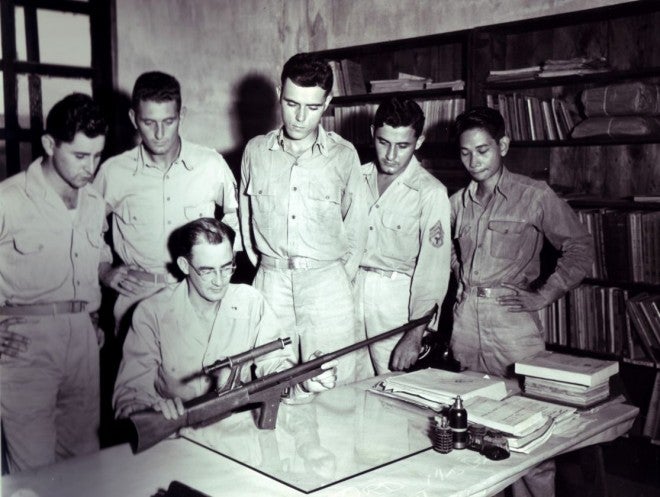Maxim Popenker, Russian small arms expert and author (and TFB contributor), has begun a three-part series of articles on the origins of the bullpup concept, one which many now believe represents the future of individual small arms:
Traditionally, a firearm in the “bullpup” configuration is defined as a gun whose trigger and firing hand grip are located ahead of the breech area. This also means that the bolt, the magazine and other working parts are usually located inside or above the shoulder stock.
If compared with traditional layouts, this configuration offers obvious advantages in terms of overall lenght and balance; some of its disadvantages include a generally more awkward reloading and/or magazine insertion design, lack of user-friendliness for left-handed shooters (to say the least) and a firing chamber positioned very close to the shooter’s face.
Bullpup designs became possible and feasible only after the introduction of metallic cartridges, which allowed ignition systems to be integrated within the action of the gun − a firing pin in the bolt, that is.
The earliest recorded bullpup rifle was patented in the United Kingdom around 1902 by Scotsman James Baird Thorneycroft; his intent was to come out with a compact-sized rifle which would, at the same time, retain the barrel lenght and thus the effective range of a conventionally-sized military rifle.
In order to achieve his goal, Thorneycroft moved the action and magazine all the way back and into the shoulder stock, and located the trigger in front of the magazine area. This called for a necessarily long transfer bar, which ran inside the stock and around the magazine.
The Thorneycroft rifle was tested in several variants by the British Army, but was rejected in favor of the traditionally-designed “Short-Magazine, Lee-Enfield” rifle, or SMLE.
More or less in the same timespan, another British inventor and Army officer − Major Philip Thomas Godsal − patented his own bullpup bolt-action rifle; despite numerous later improvements, it also ended up in a failure, with no military or civilian buyer interested.
The bullpup concept is one that I view as highly analogous to the addition of a folding stock on a conventional rifle. Both have distinct advantages, both have their own die-hard proponents, and both come with some kind of material cost. The bullpup layout introduces extra complexity, cost, weight, inconvenience, or all four to a degree. These limitations are surmountable given enough development in materials and manufacturing, but for the time being they are penalties that those seeking to adopt the concept must account for.
 Your Privacy Choices
Your Privacy Choices

